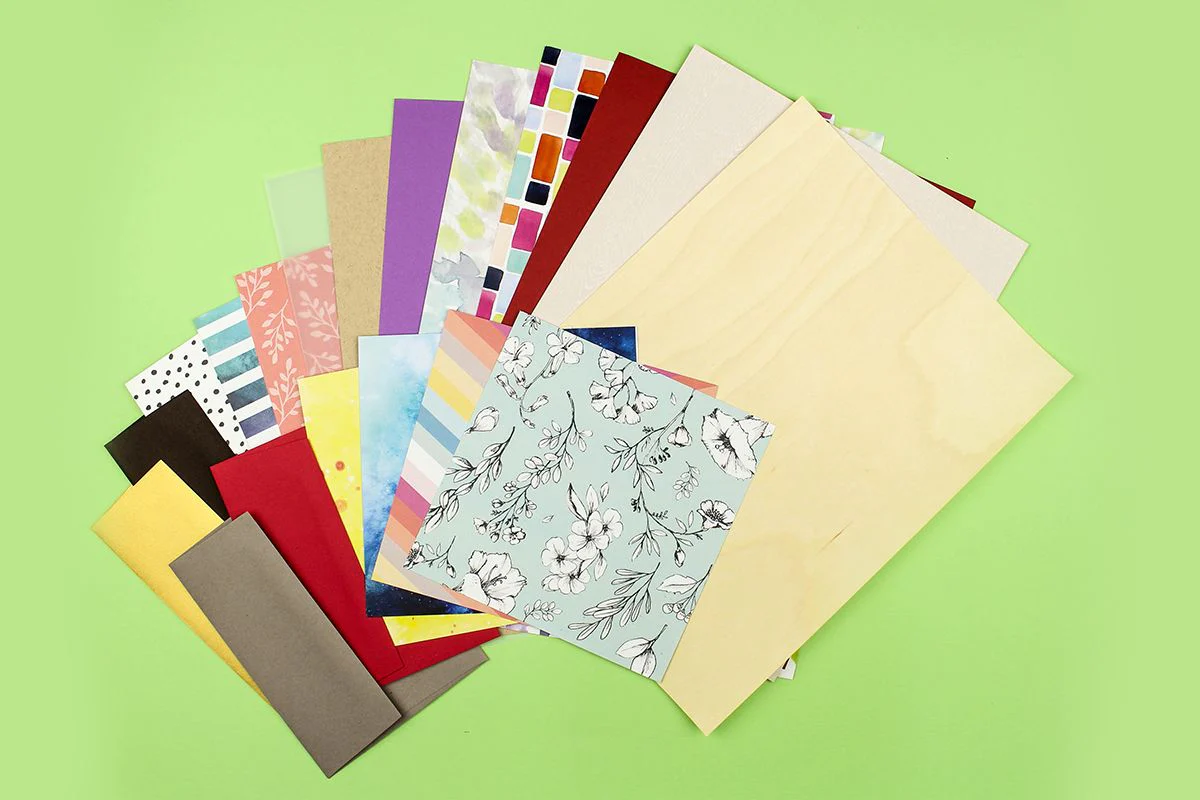Cardstock History and Definition
Cardstock, is basically cover stock, is a strong, long-lasting paper that is thicker than normal printer paper but less heavy than regular cardboard. For a long time, it’s been a preferred selection for crafting and skillful printing.
The origins of Cardstock go back to the beginning of papermaking. At that time, thicker paper was necessary for heavier items, including book covers or packaging.
What is Cardstock?
Cardstock is a paper that is of heavier density and more solid than regular paper. Some of its best uses are in invitations, cards, and scrapbooking, just to mention a few.
It comes in an excellent array of colors, dimensions, and patterns; hence, its usage range is very versatile when it comes to patterns. This is often called “card stock paper” or simply “craft paper” due to the wide use for craft purposes.
Key Takeaways
- Cardstock It is sturdy, heavy paper suitable for making crafts and printing.
- It has a long and rich history and is used extensively across various sectors.
- Cardstock paper is available in a variety of sizes, colors, and styles. It can be used for well-qualified and artistic projects.
Industry Updates (Latest News and Trends)
The market for cardstock continues to grow with the latest designs and developments. Recently, there have been increased demands for environmentally friendly and recyclable cards. People are increasingly environmentally mindful, which has led companies to design eco-friendly cardstock material.

In addition, the growth of DIY and digital craft projects has increased the need for top-quality cardstock. Crafting communities online and on platforms makes it much easier for people to access and utilize cards in new ways.
Cardstock Paper in Paper Crafting
Paper made of cardstock is an essential part of crafting with paper. Its durability and versatility make it the perfect material for anything from easy decorations to complex patterns. When you’re crafting hand-crafted card designs, pages for scrapbooks, or decorating your home, it provides an ideal base. The ability to keep its form and resist various craft techniques, like embossing, die-cutting, and stamping, makes it a perfect choice for craftspeople.
Cardstock Paper in Card Making
The white cardstock is a favorite for the art of making cards. Its crisp, clean look makes it the perfect material for creating personalized cards for any event. The white cardstock is simple to decorate, allowing for infinite imagination.
Whether making cards for a birthday, wedding invitation, or even a thank you note, White cardstock paper ensures the cards you design are well-qualified and polished.
Manufacturing and Materials
The production process of cardstock includes pressing and drying paper pulp to achieve the desired thickness and weight.
These Types of Packaging Materials can affect the cardstock’s feel, finish, and resilience. For example, cotton cardstock is well-known for its soft quality and texture, making it a top selection for any project.

Types of Cardstocks
There are many types of cardstocks suitable for a particular purpose:
- Smooth Cardstock: It is ideal for stamping and printing. Its smooth, even surface allows sharp images and clear text.
- Textured Cardstock: This paper has an enveloping surface that gives depth and interest to your projects.
- Glossy Cardstock: It has a shiny finish that is perfect for printing photos or any vibrant design.
Also, this matte cardstock has a smooth, non-reflective finish, making writing on it much more manageable. It’s also perfect for invitations and greeting cards.
What is GSM?
Now, GSM stands for “grams per square meter,” a measure of the mass of a cardstock. The higher the rating of the GSM, the heavier and more durable it will be. For example, a white cardboard paper with 300 GSM shall be more resilient and robust. The GSM 300 is denser and more robust than paper with the GSM 200.
Knowing the GSM will help you pick the correct setting you require since this will determine the texture and strength of the paper.
Texture and Finish
The texture and finish at the cardstock’s surface greatly influence your design’s appearance and feel.
Smooth Finish: Gives a clean, polished look that is perfect for skilled printing.
Linen Texture It adds a delicate material-like texture that enhances the beauty of cards and invitations.
Vellum Finish: This finish provides a slight tooth that gives the paper an uncoated, natural feel, ideal for crafting traditional paper.
Uses of Cardstock
Cardstock is utilized for a variety of tasks, which include:
- Card making: Perfect for creating personal cards for every occasion.
- Scrapbooking: It Creates an incredibly sturdy basis for embellishments and layouts.
- Invitations Excellent invitations: wedding invitations, occasion invite announcements, and wedding invitations.
- Home decoration: Used for DIY purposes like banners, photo frames, and wall art.
- Packaging: It is often applied for personalized packaging, tags, labels due to its strength and durability.
Let’s Conclude it:
Cardstock Is one of the most versatile and essential materials suitable for creative and skillful work. In addition to its durability and versatility, you can see why it’s such an ideal material for all types of projects, whether craft or commercial printing.
Knowing the different Cardstock Paper types and their uses can help a person get the best results when working on a simple DIY project or a complex layout. From White cardstock to textual surface, in all different GSM ranges, you can find just the suitable cardstock for any task.
FAQs
- What is cardstock paper used for?
Because of their resistance and durability, cardstock papers may be used to make cards, craft invitations, scrapbooks, or even for packaging.
- What is the difference between white cardstock and regular paper?
White cardstock is denser and more durable than normal paper, so it should be the right choice for works that require durability.
- How do I choose the right type of cardstock for my project?
Remember the cardboard’s texture, finish, and GSM to suit your design needs.
- Can I use cardstock for printing?
Smooth cardstock may be ideal for printing since it provides an even background with clear pictures and text.
- Where can I buy cardstock paper and craft paper?
Cardstock paper and craft paper is available at craft stores and office supply outlets, as well as online. Searching for “packing material near me” for local options is also possible.
- What’s the standard size of a business card in cardstock paper and craft paper ?
The standard for a Business Card Size cardstock paper and craft paper is typically 3.5 to 2 inches. This is a common size as these cards can be easily found in wallets and other types of card holders.



